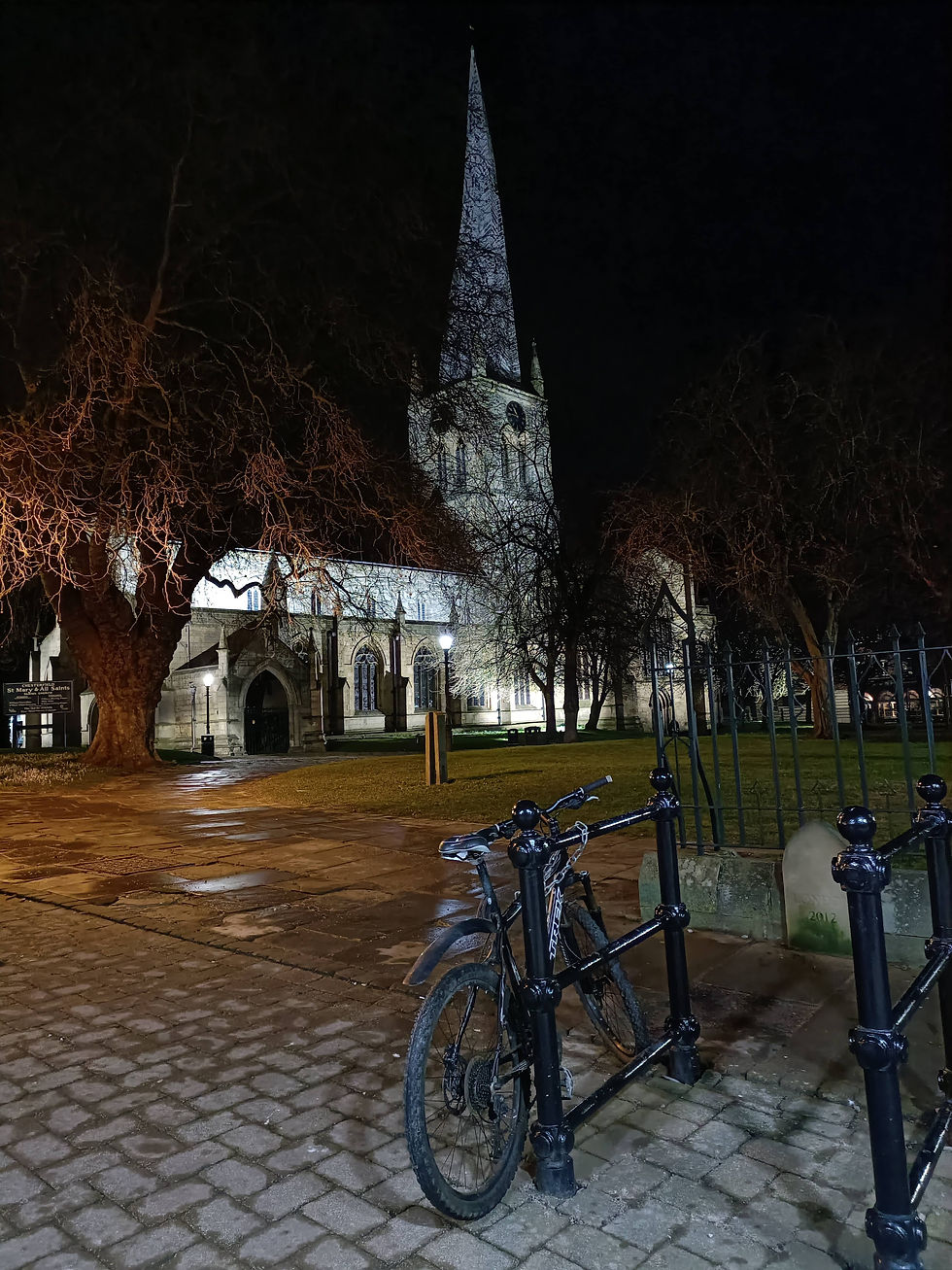Reflections on Chatsworth
- BarMade Bags

- Apr 25
- 4 min read
Whether you love or hate them, Britain's stately homes prompt reflection, and here I reflect on Chatsworth Estate in the Derbyshire Peak District.

Chatsworth is the home of the Duke and Duchess of Devonshire and the magnificent house and landscaped gardens are set within a large park with woodland behind. My husband and I are fortunate to live just 9 miles from this iconic Derbyshire site (less as the crow flies) and visit it frequently. The bus from Chesterfield to Bakewell calls in at Chatsworth and our habit is to get the bus to the village of Baslow and walk from there through the park to Chatsworth House.
As I walk along the paths through the parkland, I love seeing the variety of trees, generously spaced over the extensive grassy areas, with their variations in shapes and foliage and reflecting seasonal changes. Many are old and I think about the longevity of trees and their value as habitats along with their beauty - definitely trees should be treasured!

Probably the oldest trees on the estate are some of those found in Stand Wood - the band of woodland occupying the hillside behind the house, gardens and parkland. This is another area that we enjoy walking freely through, either taking the more gently winding track or the steeper paths that lead up to Hunters Lodge near the crest of the hill.

The parkland is home to many deer which, along with the sheep, graze the grassland and can often be seen sheltering by the trees. This is a reminder that this is an area that is productive as well as being an attractive leisure space for walking and running, or simply to sit and take in the landscape.

As we walk from Baslow, Chatsworth House gradually comes into view although in this direction we're not approaching it from its grandest side. This magnificent house oozes opulence. Its honey stone walls, gold trimmed windows and ornately carved adornments speak of privilege and wealth while also sitting gracefully within its environment. It makes me reflect on the class system and the inequalities that were (and still are) bound up within it and society in general Here is a reminder of part of our country's history, yet with the subtle change that it is now largely accessible to the general public. For a large part of the year, the gardens and much of the house are open to the public, although entry to these, as well as to other attractions such as the farm and adventure playground, is quite costly. The cost, though, does not seem to deter people, with a long procession of cars slowly approaching the parking areas at weekends and holidays indicating the popularity of the estate as a tourist attraction.
How different this would have been in days gone by when the grass spaces around the house and gardens wouldn't have been blighted by large expanses of parked cars, and this brings further reflection on the use of cars as the main means of transport.. Yet I'm glad that it's accessible to the public - so many of today's privileged and wealthy build mansions that are hidden behind high walls and electronic gates, with just glimpses revealed in glossy magazines to proclaim their "special" status.

Signs inform that Chatsworth is a charity and I know that the costs of running a vast stately home and its surrounding lands must be extensive, and this, no doubt, is the reason behind the high costs of entry and parking. The estate also provides a good source of local employment with a wide range of jobs, so there are definite advantages in it attracting plenty of visitors. Despite using it as a free resource in which to walk, we also like to support it with a drink in the cafe while there.
Last autumn, I started making a textile picture based on the photograph I took of Chatsworth and its reflection shown at the start of this blog. While most of the fabrics used for this image were offcuts of batik cottons, I wanted the house to display its grandeur by using a luxury fabric. Amongst my stash of material, I have some remnants of vintage silk damask which was woven at The Gainsborough Silk Weaving Company (now Gainsborough Weaving) in 1949 for my mother's wedding dress.


I used parts of this fabric for Chatsworth House, with the reverse side being used for the reflection in the river so that it could show the softening effect of the slight rippling on the surface of the water. To me this represents the way in which nature can affect the appearance of the built environment. I'm sure that Capability Brown, who landscaped the grounds, would have considered how his design would enhance the appearance of the buildings from the grounds as well as how they would appear from the House. Those planning housing estates or new home-owners deciding how to use their space, should always consider the benefit of having trees and other habitats for nature to improve the buildings they surround.
While making this picture, it gave me more opportunities for reflecting on Chatsworth and, as in my experience of visiting the estate, I found the woodland and grassy areas the most enjoyable parts to create, although working with the silk damask provided fond memories of my late parents.

This A3 textile art picture is now completed, with A5 size cards of it available and archive quality prints soon to be available in both A4 and A3 sizes. If you're at Peak Village in Rowsley this coming weekend (26th and 27th April) you can see it at the Derbyshire Makers Spring Fair.
Chatsworth is definitely a lovely place to visit! Have you visited it and if so, what were your thoughts about it? Do let me know!
And if you'd like to subscribe to the BarMadeCreations monthly newsletter to get news on what I'm working on next, where my work can be seen and to be able to take advantage of special offers, you can subscribe here.


















Comments